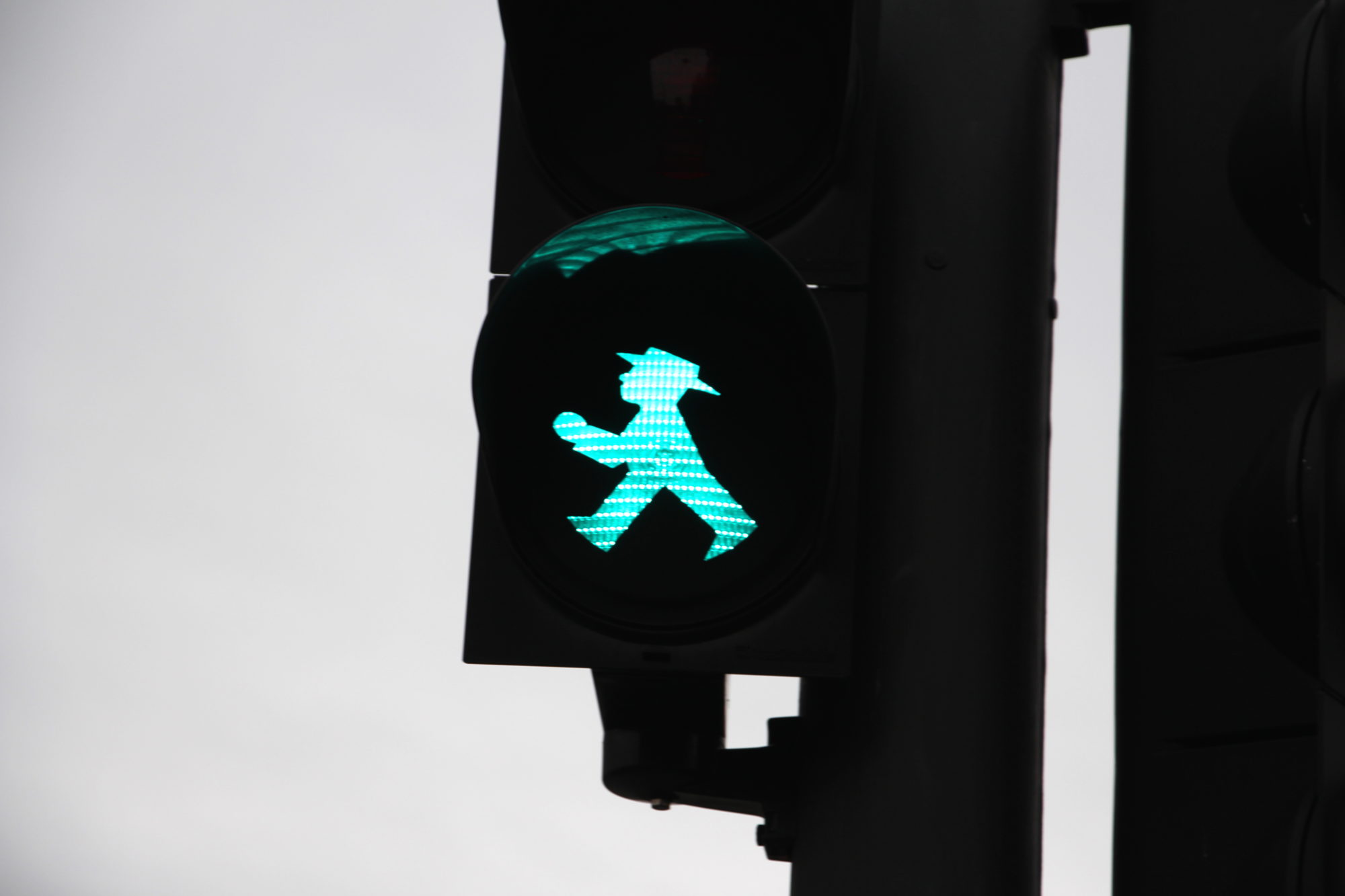1. The Ampelmännchen or little green and red men on the crossing lights in Berlin are symbolic of the city. In truth, these little men with their jaunty hats are only in former East Berlin; the western part of the city has a much more typical silhouette telling you when you cross the road.
The Ampelmännchen was developed in 1961 traffic psychologist Karl Peglau (who knew you could get a gig as a traffic psychologist?) and is now kind of a mascot – there are even shops throughout the city devoted to Ampelmännchen trinkets. I leafed through a book while I was there and found that while the Ampelmännchen originally walked to the right – which makes sense, visually, at least in a world where the language is read from left to right – but the direction was reversed to align with the political left of the Soviet regime that was still in power then.
2. While I’m not usually a checklist tourist, there were a few things I definitely wanted to see in Germany, and one was Checkpoint Charlie, the former border checkpoint leading into the American sector of Berlin. I snapped this picture of the now-defunct sign announcing one’s arrival into this sector, now bookended by KFC and McDonald’s. I hope the irony is lost on no one.
3. While there is a small piece of the Wall left at Checkpoint Charlie, the best place to see it is Bernauer Straße, which used to run along the border between East and West Berlin and where several pieces of the Wall are still visible. Many pieces are now decorated with street art (and some with straight-up tags), and there are also open-air exhibits devoted to the people who risked their lives in an attempt to cross the Wall.
4. I also planned to visit the Holocaust Memorial visitor’s center, but it was closed. The Memorial itself, however, is open-air and therefore can be visited whenever you like. The somber monument is located in the heart of the city, and rain or shine, it is constantly filled with people. It took quite a bit of angling to get a shot where it appears abandoned.
5. Berlin is an intriguing combination of old and new; 19th century architecture and modern art and installations are constantly competing for your attention. I particularly liked the way that this happened here, on the banks of the River Spree.




